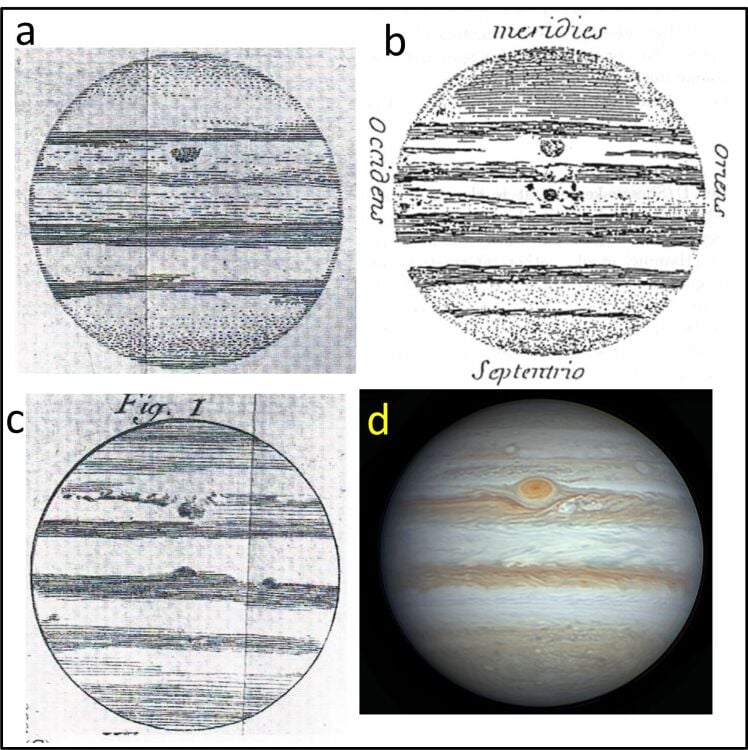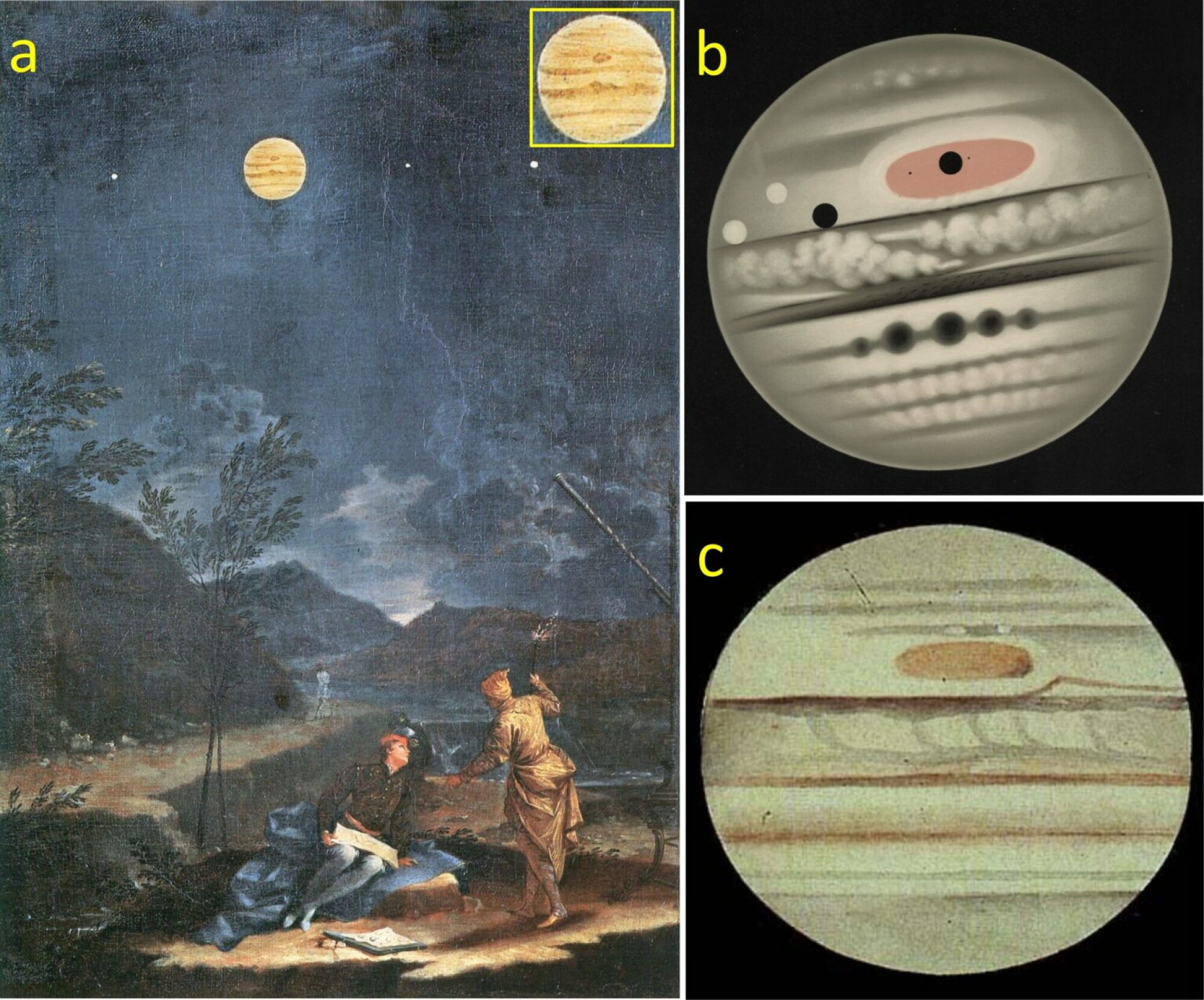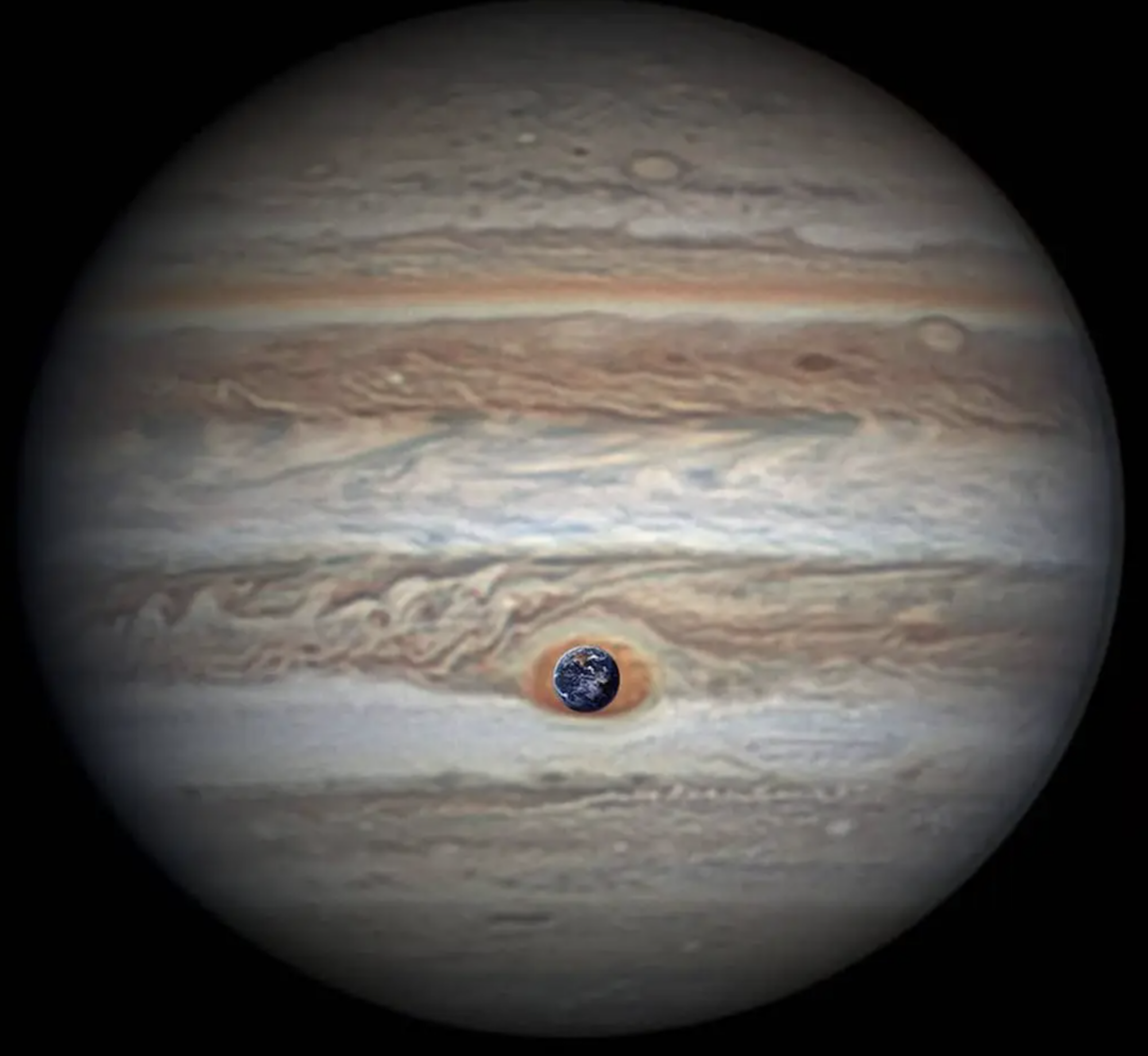Centuries ago, a huge red spot on Jupiter vanished. But years later, a new one was born.
Today we know this conspicuous feature as the “Great Red Spot,” a swirling storm wider than Earth. Curiously, earlier astronomers, like Giovanni Domenico Cassini in 1665, also observed a colossal red storm at the same latitude on Jupiter — raising the possibility that they’re actually the same storm.
In newly published research, however, astronomers sleuthed through historical drawings and early telescope observations of Jupiter to conclude that today’s spot is indeed a separate storm from its predecessor, unfittingly known as the “Permanent Spot.” It likely disappeared between the mid-18th and 19th centuries.
“What is certain is that no astronomer of the time reported any spot at that latitude for 118 years,” Agustín Sánchez-Lavega, a planetary scientist at the University of the Basque Country in Spain, told Mashable.
Then, in 1831, astronomers started seeing a conspicuous red spot again. The new research, published in Geophysical Research Letters, concludes this latest spot is at least 190 years old.
Mashable Light Speed
That’s one impressive storm. Not only has it been spinning counterclockwise for nearly two centuries, it packs winds reaching some 400 mph. Planetary scientists at NASA and elsewhere are working to understand what gives the space tempest its vibrant red hue.
Centuries-old documentation of the Permanent Spot also shows that it was much smaller than the Great Red Spot in the 19th century (and later), which means this earlier storm would have had to triple in size. But that’s not something astronomers have ever witnessed in a storm on Jupiter, Sánchez-Lavega explained.

The images a, b, and c show the “Permanent Spot” drawn by Italian astronomer Giovanni Domenico Cassini respectively in 1677, 1690, and 1691. The image d shows a view of the Great Red Spot in 2023.
Credit: G. D. Cassini / Eric Sussenbach / AGU

a: A 1711 painting with Jupiter by Donato Creti showing the Permanent Spot. b: A drawing by the French artist E. L. Trouvelot in November 1880, showing the Great Red Spot. c: A drawing by T. G. Elger in November 1881 showing the Great Red Spot.
Credit: Donato Creti / E. L. Trouvelot / T. G. Elger
You might wonder how the Great Red Spot, so unique in color and size, came to be. You’re not alone. To find out, the research team also ran computer simulations, based on the behavior of vortices (or storms) in the Jovian atmosphere. The most compelling result — that created a larger “proto-Great Red Spot” that would have shrunk into a more compact storm — was unstable wind and atmospheric disturbance in this region of Jupiter’s atmosphere. Another leading candidate was the possibility of several storms merging, but that didn’t produce something resembling the Great Red Spot.
For over 150 years, the Great Red Spot has continued to shrink. In 1879, when it appeared more sausage-like, it was some 24,200 miles (39,000 kilometers) across. Now it’s 8,700 miles (14,000 kilometers) wide, which is about the size of its predecessor. The spot’s next stages are uncertain.

The Great Red Spot, as seen in April 2017, with Earth overlaid.
Credit: NASA / JPL-Caltech / SwRI / MSSS / Christopher Go
“We do not know what the future of the [Great Red Spot] is,” Sánchez-Lavega said. If it continues to contract, it could fragment apart. Or, he added, “It may reach a stable size and last for a long time.”
One thing is certain: From our perch hundreds of millions of miles away, we’ll be watching.


